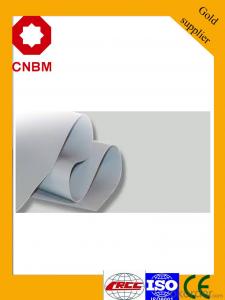Root Puncturing Resisted SBS Modified Bituminous Waterproofing Membrane
- Loading Port:
- Shanghai
- Payment Terms:
- TT OR LC
- Min Order Qty:
- 44 roll
- Supply Capability:
- 100000 roll/month
OKorder Service Pledge
OKorder Financial Service
You Might Also Like
Product description
SBS modified bitumen waterproof membranes use high quality needle punched polyester mat or fiberglass compound mat as the base reinforcement. And use SBS modified bitumen as the dip-coat material. The SBS modified bitumen waterproof membrane are widely used for roof waterproof projects.
Main performance
1.Good low temperature performance, especially suitable for cold regions.
2.Good weather resistance, tensile property, extensibility, corrosion resistance and so on.
3.Strong adaptability for substrate shrinkage, deformation and cracks.
4.Convenient to apply: use heat fusion method in all seasons.
5. Meet national standards.
6.ISO Certification.
Technical Parameters
No. |
Item | Index | |||||||||
Ⅰ | Ⅱ | ||||||||||
PY | G | PY | G | PYG | |||||||
1 |
soluble content(g/m2) ≥ | 3mm | 2100 | — | |||||||
4mm | 2900 | — | |||||||||
5mm | 3500 | ||||||||||
test phenomenon | — | non-ignitable | — | non-ignitable | — | ||||||
2 |
heat resistance | °C | 90 | 105 | |||||||
≤mm | 2 | ||||||||||
test phenomenon | no flow or drippage | ||||||||||
3
|
low temperature flexibility °C | -20 | -25 | ||||||||
no flaw | |||||||||||
4
|
water tightness 30min
|
0.3Mpa |
0.2Mpa |
0.3Mpa
| |||||||
5 |
tension | tension of maximum peak rate%≥ | 500 | 350 | 800 | 500 | 900 | ||||
tension of maximum peak rate%≥ | — | — | — | — | — | ||||||
test phenomenon | no cracks or separate | ||||||||||
6 |
elongation
| elongation of maximum peak rate%≥ |
30 |
— |
40 |
— | |||||
elongation of second peak rate%≥peak rate%≥ |
— |
— |
15 | ||||||||
Product usage
The waterproof , dampproof and seepage-proofing of roof, basement, tunnel and so on.
Packaging and storage
1)Avoid insolating, raining; the temperature shall be 4-45°C;
2)Keep them stand up and vertical;
3)Do not stack up over two tiers, avoid tilting and lateral drift.
product show
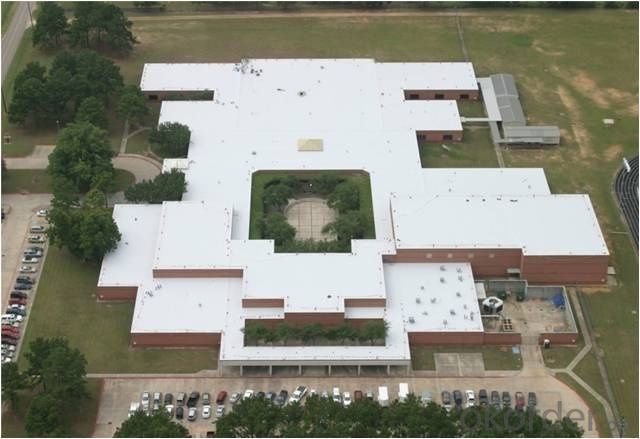

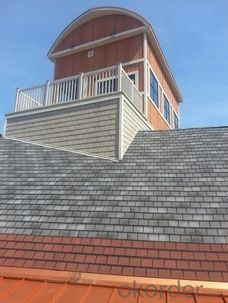
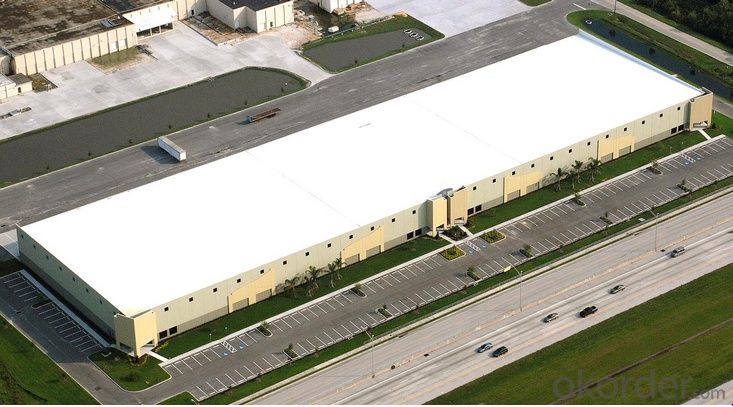
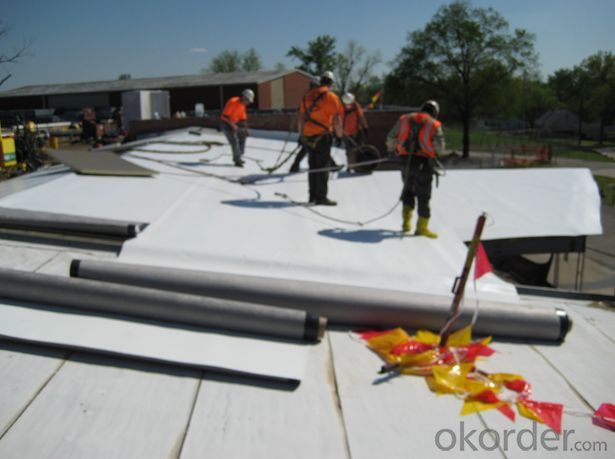
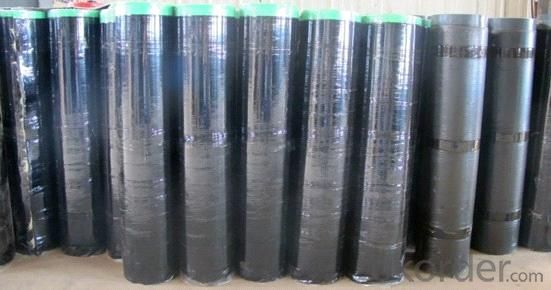
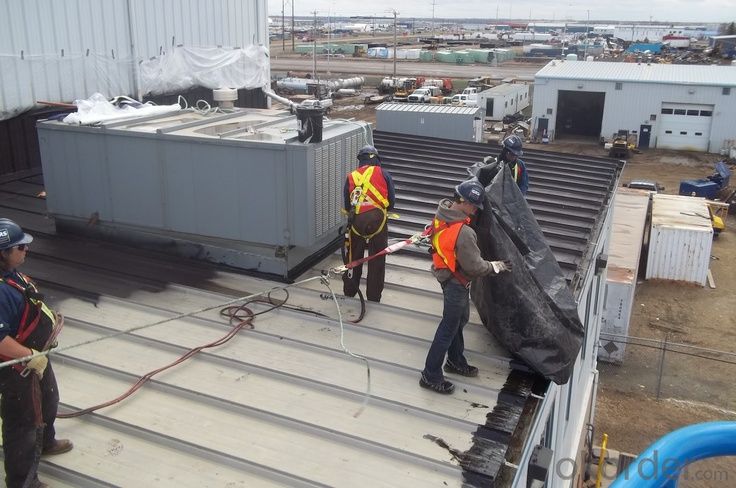
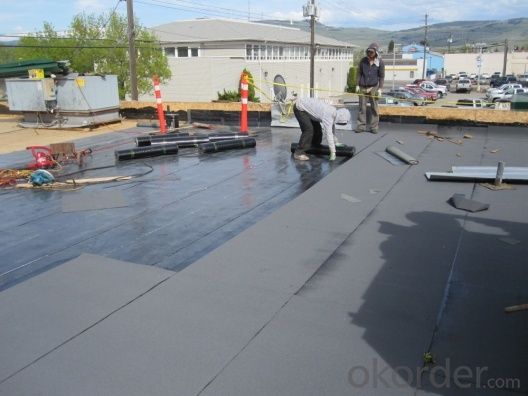
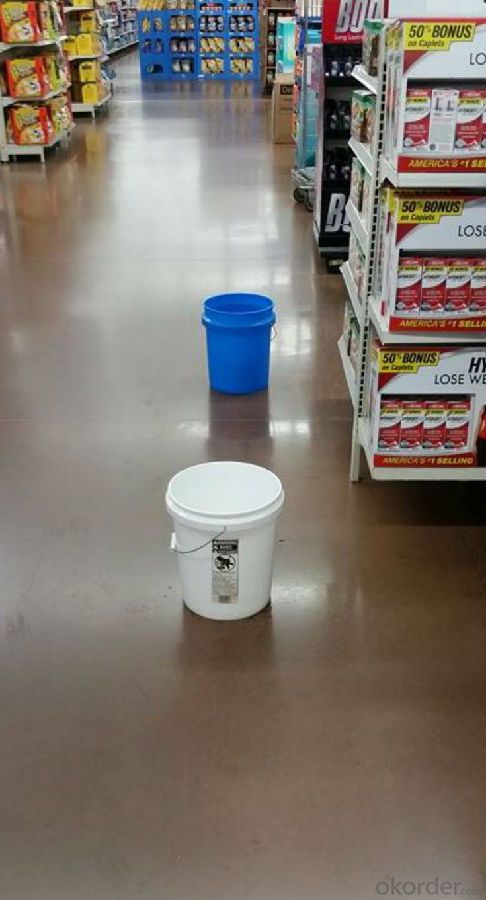

FAQ
Q: What's the delivery time ?
A: 3-5 days for 1-600 rolls, 10-15 days for container.
Q: What's the payment terms ?
A: TT/LC
Q: How do you make replacement with quality problems ?
A: New replacement will be packed into your next order or send to you directly after receive video or photo about quality problems.
- Q:Can a waterproofing membrane be used on precast stone block surfaces?
- Yes, a waterproofing membrane can be used on precast stone block surfaces. Waterproofing membranes are commonly used to prevent water penetration and moisture damage in various types of surfaces, including precast stone blocks. These membranes are designed to create a barrier against water, preventing it from seeping into the surface and causing issues such as mold, deterioration, or structural damage. Applying a waterproofing membrane to precast stone block surfaces can help enhance their durability and longevity by protecting them from water-related problems. However, it is important to carefully follow the manufacturer's instructions and ensure that the chosen waterproofing membrane is suitable for the specific type of precast stone block surface being treated.
- Q:Can waterproofing membranes be applied in cold weather?
- Yes, waterproofing membranes can be applied in cold weather. However, it is important to consider a few factors when applying these membranes in low temperatures. Cold weather can affect the curing process of the membrane, potentially slowing it down. It is crucial to ensure that the surface being waterproofed is dry and free from ice or frost before applying the membrane. Additionally, some waterproofing products may have specific temperature requirements for optimal performance, so it is essential to consult the manufacturer's guidelines. In colder temperatures, it may also be necessary to use specialized adhesives or primers designed for cold weather applications. Overall, with proper precautions and the use of appropriate materials, waterproofing membranes can be successfully applied in cold weather.
- Q:Are there any specific requirements for installing a waterproofing membrane?
- Yes, there are specific requirements for installing a waterproofing membrane. These requirements may vary depending on the type of membrane being used and the specific application. However, some general requirements include: 1. Surface Preparation: The surface where the membrane will be installed must be clean, dry, and free from any dust, debris, or contaminants. Any cracks or defects in the surface should be repaired prior to installation. 2. Adhesive or Bonding Agent: Depending on the type of membrane, an adhesive or bonding agent may be required to ensure proper adhesion to the substrate. This adhesive should be compatible with both the membrane and the substrate. 3. Primer: In some cases, a primer may be necessary to enhance the adhesion between the substrate and the membrane. The type of primer required will depend on the specific membrane and substrate being used. 4. Seam and Joint Preparation: Properly preparing seams and joints is crucial to ensure a watertight installation. This may involve using a specific sealant or tape to reinforce the seams and prevent water penetration. 5. Installation Techniques: The membrane should be installed according to the manufacturer's instructions and industry best practices. This may include using a specific method such as torching, hot air welding, or cold adhesive application. 6. Overlaps and Transitions: Properly overlapping the membrane sheets and ensuring smooth transitions between different areas is essential for a successful installation. This will help prevent water from seeping through gaps or weak points in the membrane. 7. Quality Control: Regular inspections and quality control measures should be implemented throughout the installation process to ensure that the membrane is being installed correctly and meets the required standards. It is important to consult the manufacturer's guidelines and specifications for the specific waterproofing membrane being used, as different membranes may have unique installation requirements. Additionally, local building codes and regulations should also be considered to ensure compliance and to meet any specific requirements in your area.
- Q:Does a waterproofing membrane require any specific cleaning or maintenance procedures?
- To ensure the longevity and effectiveness of a waterproofing membrane, it is necessary to follow specific cleaning and maintenance procedures. Regular cleaning and maintenance are important to prevent the accumulation of debris, dirt, and contaminants that could compromise the membrane's ability to keep water out. The exact procedures for cleaning and maintenance may vary depending on the type of waterproofing membrane used, but there are some general guidelines to follow. Firstly, it is crucial to frequently inspect the membrane for any signs of damage, such as cracks, tears, or deterioration. If any issues are found, they should be addressed promptly to prevent further damage. When it comes to cleaning, it is recommended to use a soft-bristle broom or a leaf blower to remove loose debris or dirt from the membrane surface. It is important to avoid harsh chemicals or abrasive materials that could harm the membrane. Instead, a mild detergent or specialized cleaning solution recommended by the manufacturer should be used. The surface can be gently scrubbed with a soft brush or sponge and thoroughly rinsed with clean water. Additionally, it is vital to keep the surrounding drainage systems clear and free from obstructions. Regular inspection and cleaning of gutters, downspouts, and drains are necessary to ensure proper water flow and prevent potential water damage. Lastly, it is advisable to have the waterproofing membrane professionally inspected and maintained on a regular basis. This will help identify any potential issues early on and ensure that the membrane is functioning optimally. By following these specific cleaning and maintenance procedures, the lifespan of the waterproofing membrane can be prolonged, and its effectiveness in preventing water infiltration can be maintained.
- Q:How does a waterproofing membrane handle exposure to UV rays?
- A waterproofing membrane is designed to handle exposure to UV rays by incorporating UV stabilizers and additives into its composition. These UV stabilizers work by absorbing or reflecting the harmful UV rays, preventing them from causing degradation or damage to the membrane. UV rays from the sun can be quite intense and can lead to the deterioration of various materials over time. When a waterproofing membrane is continuously exposed to UV rays, it can undergo a process called photo-oxidation, where the energy from the UV rays reacts with the membrane's molecular structure, causing it to break down and weaken. To counteract this, manufacturers add UV stabilizers to the membrane during the manufacturing process. These stabilizers act as a shield, absorbing or reflecting the UV rays and preventing them from reaching the membrane's surface. By doing so, they help to slow down the process of photo-oxidation and extend the lifespan of the waterproofing membrane. Additionally, some waterproofing membranes may also have a protective layer or coating that provides additional UV resistance. This layer acts as an extra barrier, shielding the membrane from direct exposure to UV rays and further enhancing its durability and longevity. However, it's important to note that even with UV stabilizers and protective coatings, prolonged exposure to intense UV rays can still cause some degree of degradation or discoloration over time. Therefore, it is recommended to regularly inspect and maintain the waterproofing membrane to ensure its effectiveness and address any signs of UV damage promptly.
- Q:Can a waterproofing membrane be installed underneath tile or other flooring materials?
- Yes, a waterproofing membrane can be installed underneath tile or other flooring materials to protect against moisture and water damage.
- Q:Can waterproofing membranes be used on concrete tunnels?
- Yes, waterproofing membranes can be used on concrete tunnels. Waterproofing membranes are commonly used to provide a barrier against water infiltration in various structures, including concrete tunnels. These membranes, which can be made of various materials such as bitumen, PVC, or EPDM, are applied on the exterior surface of the tunnel walls to prevent water from seeping through the concrete. By creating a waterproof layer, these membranes help protect the tunnel from water damage, such as corrosion, deterioration, and leaks. Additionally, waterproofing membranes also provide a protective barrier against other potential sources of moisture, such as groundwater or surface water. It is important to ensure that the selected waterproofing membrane is suitable for the specific conditions and requirements of the concrete tunnel, taking into account factors such as the level of water pressure, chemical exposure, and temperature variations. Proper installation and regular maintenance of the waterproofing membrane are crucial to ensure its effectiveness and long-term durability in protecting the concrete tunnel from water ingress.
- Q:Can waterproofing membranes be used on swimming pool decks?
- Yes, waterproofing membranes can be used on swimming pool decks to protect them from water damage and leaks.
- Q:Can a waterproofing membrane be used for a roof?
- Yes, a waterproofing membrane can be used for a roof. Waterproofing membranes are specifically designed to provide a barrier against water penetration, making them an ideal choice for protecting roofs from leaks and water damage. They are durable, flexible, and can be applied to various types of roofs, including flat and sloped surfaces.
- Q:How does a waterproofing membrane handle temperature fluctuations?
- A waterproofing membrane is designed to handle temperature fluctuations by being flexible and resistant to thermal expansion and contraction. Temperature fluctuations can cause materials to expand and contract, which can lead to cracks, leaks, and other forms of damage. However, a waterproofing membrane is typically made from a durable and flexible material, such as PVC or EPDM, that can withstand these changes in temperature without compromising its effectiveness. When exposed to high temperatures, the membrane will expand slightly to accommodate the increased thermal energy. Conversely, when temperatures drop, the membrane will contract to maintain its integrity. This flexibility allows the membrane to adapt to the changing conditions without cracking or becoming brittle. In addition to being flexible, a waterproofing membrane is also designed to resist UV radiation from the sun. UV radiation can cause materials to deteriorate over time, leading to decreased performance and potential leaks. By incorporating UV stabilizers into the membrane's composition, it can withstand prolonged exposure to sunlight and maintain its durability even in harsh weather conditions. Furthermore, some waterproofing membranes have built-in insulation properties that help to regulate temperature fluctuations. These membranes can provide additional thermal resistance, reducing heat loss in cold weather and minimizing heat gain in hot weather. This insulation layer helps to stabilize the temperature of the underlying structure, preventing damage caused by extreme temperature changes. Overall, a waterproofing membrane is engineered to handle temperature fluctuations by being flexible, resistant to thermal expansion and contraction, and capable of withstanding UV radiation. These properties ensure that the membrane remains intact and effective in protecting the underlying structure from water damage, regardless of the surrounding temperature conditions.
1. Manufacturer Overview |
|
|---|---|
| Location | |
| Year Established | |
| Annual Output Value | |
| Main Markets | |
| Company Certifications | |
2. Manufacturer Certificates |
|
|---|---|
| a) Certification Name | |
| Range | |
| Reference | |
| Validity Period | |
3. Manufacturer Capability |
|
|---|---|
| a)Trade Capacity | |
| Nearest Port | |
| Export Percentage | |
| No.of Employees in Trade Department | |
| Language Spoken: | |
| b)Factory Information | |
| Factory Size: | |
| No. of Production Lines | |
| Contract Manufacturing | |
| Product Price Range | |
Send your message to us
Root Puncturing Resisted SBS Modified Bituminous Waterproofing Membrane
- Loading Port:
- Shanghai
- Payment Terms:
- TT OR LC
- Min Order Qty:
- 44 roll
- Supply Capability:
- 100000 roll/month
OKorder Service Pledge
OKorder Financial Service
Similar products
New products
Hot products
Hot Searches
Related keywords
